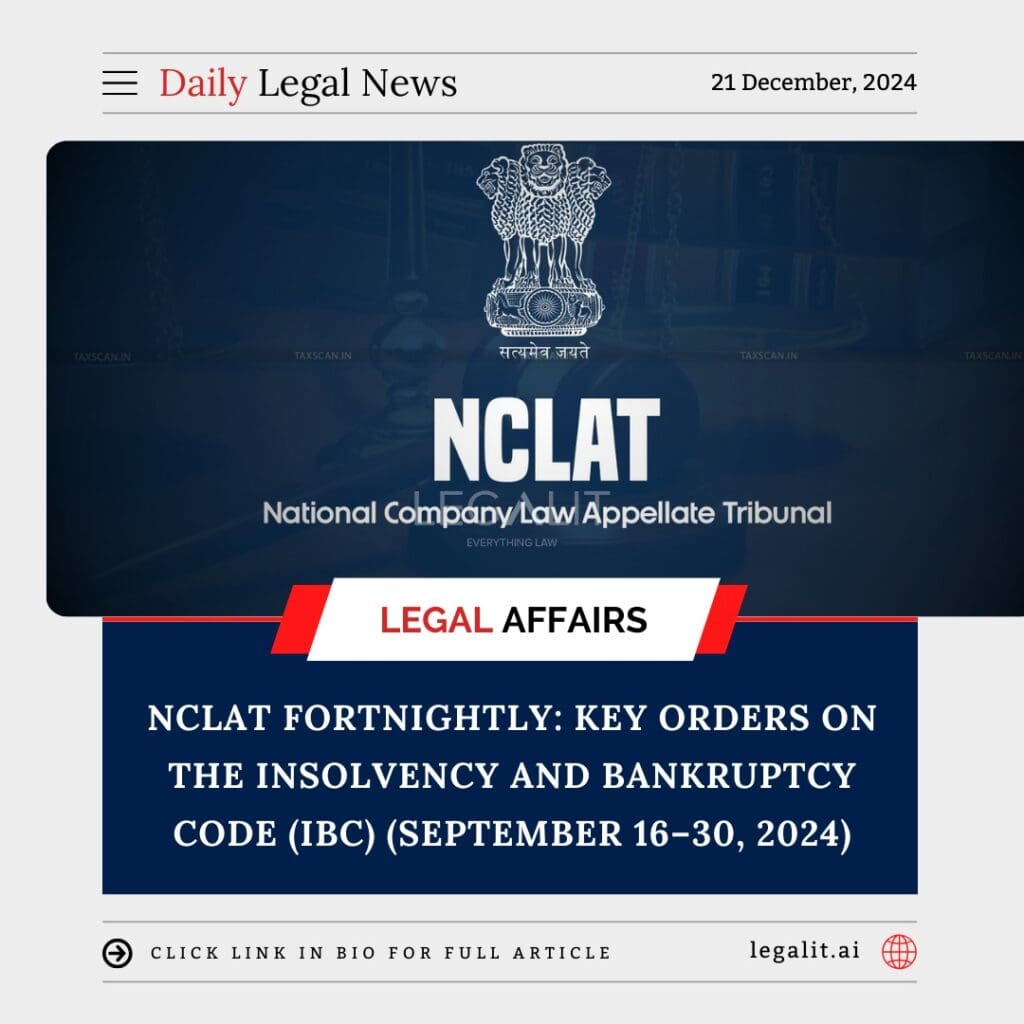
The National Company Law Appellate Tribunal (NCLAT) issued several significant orders under the Insolvency and Bankruptcy Code (IBC) during the second half of September 2024. These decisions address critical issues related to insolvency proceedings, debt recovery, and corporate restructuring.
Key Highlights
1. Priority of Financial Creditors Over Operational Creditors
The NCLAT reaffirmed the statutory priority of financial creditors over operational creditors in the resolution process. In one case, it emphasized that the distribution of proceeds under a resolution plan must strictly adhere to Section 53 of the IBC.
2. Admissibility of Claims Post-CIRP Deadline
In another judgment, the NCLAT ruled that claims submitted after the closure of the Corporate Insolvency Resolution Process (CIRP) cannot be entertained unless exceptional circumstances exist. This decision reinforces the importance of timely filing by creditors to avoid disruption in the resolution process.
3. Treatment of Dissenting Creditors in Resolution Plan
A significant decision clarified the rights of dissenting financial creditors. The tribunal held that a resolution plan cannot arbitrarily reduce the payout to dissenting creditors below the liquidation value of their claims. This ensures equitable treatment and protects minority stakeholders.
4. Role of Promoters in CIRP
In a dispute concerning promoter involvement, the NCLAT observed that promoters cannot challenge decisions taken by the Committee of Creditors (CoC) unless there is evident illegality or malafide intent. The judgment reiterates that promoters, being erstwhile management, must not interfere with the CIRP.
5. Applicability of Limitation Act
The NCLAT dealt with the applicability of the Limitation Act, holding that applications for initiating CIRP under Section 7 or Section 9 of the IBC are subject to the three-year limitation period. However, acknowledgment of debt can extend this timeline.
Legal Implications
- Timely Filings: The emphasis on adhering to deadlines for submitting claims ensures streamlined CIRP proceedings and prevents unnecessary delays.
- Creditor Rights: The clarification on dissenting creditor payouts aligns with the intent of the IBC to balance the interests of all stakeholders.
- Promoter Influence: Limiting the role of promoters in the resolution process strengthens creditor autonomy and safeguards against undue interference.
Policy Implications
- These rulings contribute to the evolving jurisprudence under the IBC, promoting transparency and accountability in corporate insolvency.
- They also highlight the judiciary’s role in maintaining a balance between creditor recovery and corporate restructuring.
Conclusion
The NCLAT’s orders from September 16–30, 2024, underline its commitment to ensuring a fair and efficient insolvency resolution process. By addressing key concerns like creditor priority, adherence to deadlines, and promoter influence, the tribunal continues to strengthen the legal framework governing corporate insolvency in India. These decisions provide clarity and guidance for stakeholders navigating the complexities of the IBC.